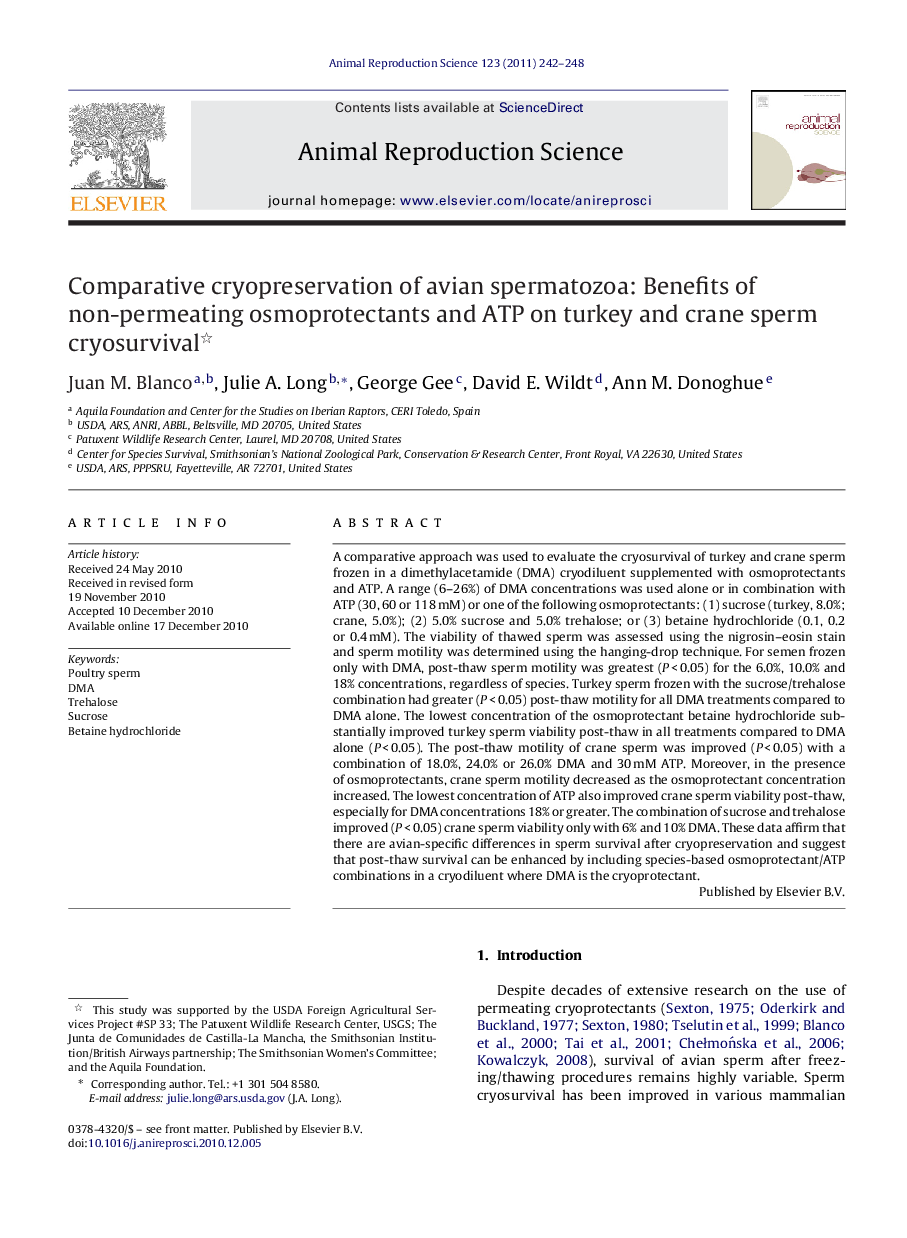| Article ID | Journal | Published Year | Pages | File Type |
|---|---|---|---|---|
| 8405473 | Animal Reproduction Science | 2011 | 7 Pages |
Abstract
A comparative approach was used to evaluate the cryosurvival of turkey and crane sperm frozen in a dimethylacetamide (DMA) cryodiluent supplemented with osmoprotectants and ATP. A range (6-26%) of DMA concentrations was used alone or in combination with ATP (30, 60 or 118Â mM) or one of the following osmoprotectants: (1) sucrose (turkey, 8.0%; crane, 5.0%); (2) 5.0% sucrose and 5.0% trehalose; or (3) betaine hydrochloride (0.1, 0.2 or 0.4Â mM). The viability of thawed sperm was assessed using the nigrosin-eosin stain and sperm motility was determined using the hanging-drop technique. For semen frozen only with DMA, post-thaw sperm motility was greatest (PÂ <Â 0.05) for the 6.0%, 10.0% and 18% concentrations, regardless of species. Turkey sperm frozen with the sucrose/trehalose combination had greater (PÂ <Â 0.05) post-thaw motility for all DMA treatments compared to DMA alone. The lowest concentration of the osmoprotectant betaine hydrochloride substantially improved turkey sperm viability post-thaw in all treatments compared to DMA alone (PÂ <Â 0.05). The post-thaw motility of crane sperm was improved (PÂ <Â 0.05) with a combination of 18.0%, 24.0% or 26.0% DMA and 30Â mM ATP. Moreover, in the presence of osmoprotectants, crane sperm motility decreased as the osmoprotectant concentration increased. The lowest concentration of ATP also improved crane sperm viability post-thaw, especially for DMA concentrations 18% or greater. The combination of sucrose and trehalose improved (PÂ <Â 0.05) crane sperm viability only with 6% and 10% DMA. These data affirm that there are avian-specific differences in sperm survival after cryopreservation and suggest that post-thaw survival can be enhanced by including species-based osmoprotectant/ATP combinations in a cryodiluent where DMA is the cryoprotectant.
Related Topics
Life Sciences
Agricultural and Biological Sciences
Animal Science and Zoology
Authors
Juan M. Blanco, Julie A. Long, George Gee, David E. Wildt, Ann M. Donoghue,
